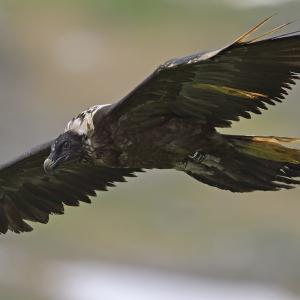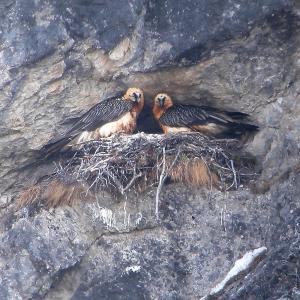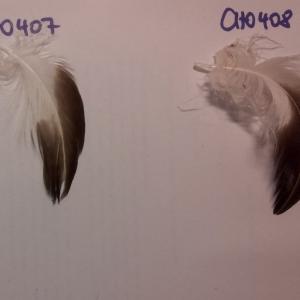Monitoring
Monitoring: A key to project success
To reintroduce a species that has disappeared is not easy. Therefore, the IUCN (International Union for Conservation of Nature and Natural Resources) has established detailed guidelines to how the reintroduction of a vanished species should take place. A key element is the monitoring of reintroduced animals and conducting demographic, ecological and ethological studies. Only with careful scientific evaluation is it possible to continually judge the success of the reintroduction, to identify problems early on, and to decide on effective action. Therefore, the monitoring of releases is, in addition to rewilding and communication, a central element of our work.
Monitoring using various methods
The monitoring of the reintroduction project is executed with varying methods. The essential components of our monitoring are 1) Monitoring using individual markers, 2) targeted observation of breeding pairs, 3) genetic monitoring, and 4) monitoring of Bearded Vultures using satellite transmitters.
Visual observations: Please report!
In order to be able to follow the fate of rewilded Bearded Vulture, each bird is marked individually. Permanent foot rings and custom bleaching patterns, which are achieved by bleaching individual feathers, are used. If marked Bearded Vultures are reported, we receive valuable information about the whereabouts of these animals. Reports of birds without markers can also give us information about the distribution and abundance of Bearded Vultures. Photographs are especially useful as we can often estimate the age of the observed animals. Therefore, we are grateful for each observation which is sent to us. Here you can go straight to the reporting form >>
Breeding pairs are carefully monitored
Brooding Bearded Vultures can be very sensitive to disturbances. A careful protection of breeding sites is important to the success of the reintroduction project. Our regional coordinators >> therefore carefully follow all information about pairings and monitor, together with gamekeepers and volunteers from the respective regions, the Bearded Vultures during the breeding and rearing period. This helps to improve the protection of valuable broods and, at the same time, gives us valuable data about stock development. Our regional coordinators play a key role in the reintroduction project in this, and other monitoring and communication tasks.
Genetic monitoring of stock development
Before Bearded Vultures can be released, a genetic fingerprint is created for all animals. When later, feathers of Bearded Vultures are found in the field they can be analysed in the laboratory and assigned to the associated individual. By selectively collecting moulted feathers of the old and young animals in breeding pairs after the breeding season, we obtain information about the identity of breeding Bearded Vultures and can simultaneously create the genetic profiles of wild hatched juveniles. This genetic monitoring is an important tool for investigating the small Bearded Vulture stock, using population genetics methodology.
Satellite transmitters reveal where the Bearded Vultures are
Small, solar-powered satellite transmitters can give us a very detailed picture of the tours and the spatial behaviour of Bearded Vultures. Devices are mainly used that collect GPS locations and transmit them at regular intervals via the mobile phone network. Like this we can closely monitor Bearded Vultures over several years and take action if we find problems. Several times we have managed to save a weakened Bearded Vulture and that would have died without intervention. We get valuable information on which Bearded Vulture risks are exposed to. The journeys of transmitter-equipped Bearded Vultures can be followed on our website (see Bearded Vultures on the Move")
IBM - an international database for the Bearded Vultures
Bearded Vulture need a large habitat so that a sustainable stock can build up. This requires a coordinated approach across the entire Alpine region. The Foundation Pro Bearded Vulture operates closely with the partners from Austria, Italy and France in rewilding and monitoring. This is made possible thanks to an international program for monitoring Bearded Vultures, known as IBM (International Bearded vulture Monitoring). In committee, working in cooperation with representatives from all Alpine regions, the monitoring activities are coordinated. A key element is the IBM database where all the data from the international programme is merged.




